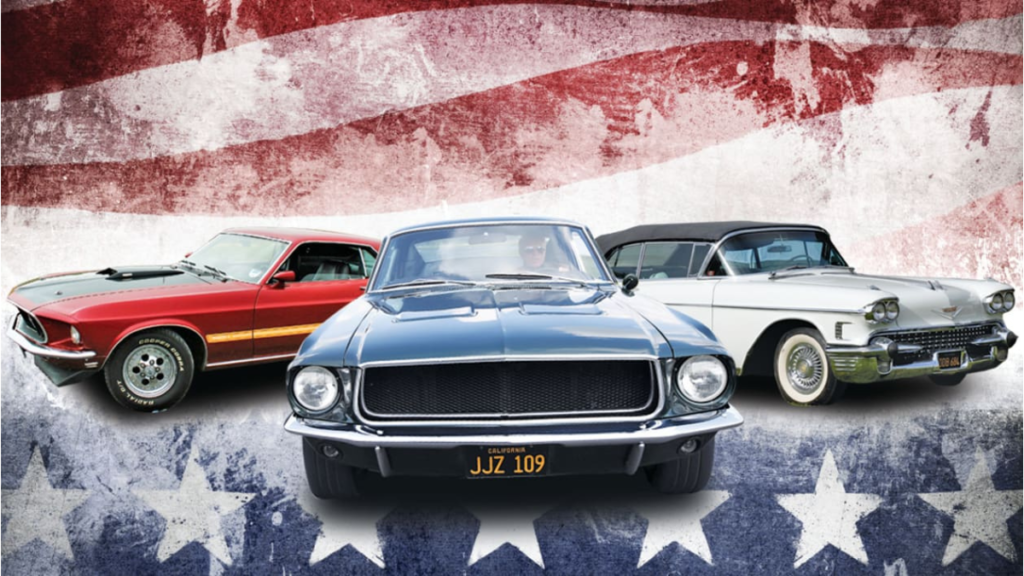The American automotive industry has a rich history, spanning from the birth of the Model T in 1908 to the current era of electric vehicles. The industry has evolved through iconic designs, high-performance muscle cars, and the energy crisis of the 1970s. As the industry embraced technological advancements, such as electronic fuel injection and airbags, it remained competitive in the global market. The SUV boom and crossovers reflected changing consumer preferences for performance and practicality. The electric revolution has redefined the perception of electric cars, with American automakers like Tesla leading the way. Models like the Ford Mustang and Chevrolet Corvette have achieved global acclaim, symbolizing the timeless appeal of American automotive design and engineering. The legacy of the American automobile continues to be written, promising new chapters of innovation, sustainability, and a commitment to the spirit of the open road.
The Birth of American Automobiles:
The late 19th and early 20th centuries witnessed the emergence of the American automobile industry. Icons like Henry Ford revolutionized production with the introduction of assembly line manufacturing, making cars more affordable and accessible to the masses. The Ford Model T, introduced in 1908, became a symbol of the American automotive spirit, putting millions of Americans on the road for the first time.
Muscle Cars and the Golden Era:
The 1960s and 1970s marked the golden era of American cars, with the rise of muscle cars capturing the hearts of enthusiasts. Models like the Chevrolet Camaro, Ford Mustang, and Dodge Charger defined an era of high-performance, style, and a sense of freedom on the open road. These iconic vehicles showcased the American commitment to power and speed, leaving an indelible mark on automotive history.
The Energy Crisis and the Shift to Efficiency:
The 1970s also brought challenges, including the oil embargo and energy crisis, leading to a shift in consumer preferences towards fuel efficiency. American automakers responded by introducing smaller, more fuel-efficient models. The Ford Pinto and Chevrolet Chevette were emblematic of this era, reflecting a newfound emphasis on economy and practicality.
Technological Advancements in the Late 20th Century:
As the automotive industry moved into the late 20th century, American cars began to incorporate advanced technologies. Electronic fuel injection, anti-lock brakes, and airbags became standard features, enhancing both safety and performance. American manufacturers embraced innovation, ensuring their vehicles remained competitive in the rapidly evolving global market.
The SUV Boom and the Rise of Crossovers:
The late 20th century and early 21st century witnessed a surge in the popularity of SUVs (Sport Utility Vehicles) and crossovers. Models like the Ford Explorer and Chevrolet Tahoe became staples in American households, offering spacious interiors, versatile utility, and a commanding presence on the road. The shift towards larger vehicles reflected changing consumer preferences and a desire for both performance and practicality.
The Electric Revolution:
In recent years, the automotive landscape has undergone a radical transformation with the advent of electric vehicles (EVs). American automakers, including Tesla, have been at the forefront of this electric revolution. Tesla’s Model S, Model 3, and Model X have not only redefined the perception of electric cars but have also set new standards for performance and technology. Other traditional American automakers have followed suit, announcing ambitious plans to electrify their vehicle lineups, signaling a commitment to a sustainable and emission-free future.
American Cars in the Global Market:
American cars have consistently made an impact on the global stage. While muscle cars and pickup trucks remain popular domestically, American manufacturers have expanded their reach internationally. Models like the Ford Mustang and Chevrolet Corvette have achieved global acclaim, symbolizing the timeless appeal of American automotive design and engineering.
Conclusion:
From the early days of mass production to the current era of electric innovation, American cars have undergone a remarkable evolution. The industry’s ability to adapt to changing consumer demands, embrace technological advancements, and maintain a sense of identity has allowed American cars to endure and thrive. As we look to the future, the legacy of the American automobile continues to be written, promising new chapters of innovation, sustainability, and a continued commitment to the spirit of the open road.







